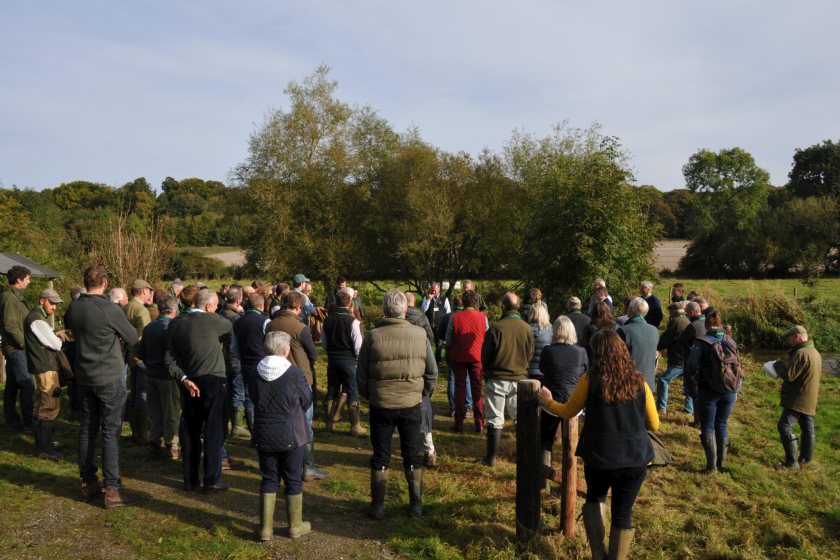
A co-operative consisting of eighty farmers has been formed with an aim to protect and enhance the landscape surrounding the River Avon.
The Environmental Farmers Group (EFG), which is expected to cover over 40,000 hectares, is thought to be the first of its kind to be established in the UK.
The Hampshire farmers have pledged to deliver biodiversity recovery and clean water in the River Avon, as well as a net zero farming goal by 2040.
The co-op says it will utilise opportunities to mitigate carbon consumption, offset biodiversity loss, and reduce phosphate and nitrate levels in watercourses while producing food.
The new group will offer organisations looking for large-scale environmental trades the advantages of dealing with one body, rather than lots of individual farmers.
The Game & Wildlife Conservation Trust (GWCT), which is supporting the EFG, said the co-operative's formation was a 'very inspiring development'.
Teresa Dent, chief executive of the GWCT, said: "By co-ordinating at real scale – this is the biggest chalk stream catchment in England at 170,000 ha – they can be ambitious about what they want to achieve and be fairly rewarded for their efforts.
"I am particularly excited that the farmers are developing a conservation plan for the whole catchment looking at how to achieve their environmental ambitions.
"This is the first time that farmers have come together at this scale to benefit conservation."
NFU President Minette Batters, who is part of the Lower Avon Farmer Cluster, welcomed the formation of the new group.
"The farmers from seven adjoining clusters have come together and formed a co-operative encompassing more than 40,000 hectares.
"It’s farmer-led and farmer-owned, backed by technical professional expertise and, most importantly, it has brought tenants and landowners together to establish these new trades.”
The EFG evolved out of the farmer cluster model piloted by the GWCT with Defra and Natural England between 2013-2015 and pioneered by the farmers in the Marlborough Downs Nature Improvement Area from 2012.
Through the group, farmers in the Avon catchment can aggregate the power of their farmer clusters to deliver ambitious environmental outcomes.
The farmers involved have already boosted red-listed wildlife in the area, with one cluster doubling the number of corn buntings on their land and another bringing about lapwing recovery in the Avon Valley in conjunction with the GWCT.
Rob Shepherd, a farmer who leads the Allenford Farmer Cluster to the south of Salisbury, is chairing the EFG and is excited about the potential for real change.
"We want to build on our landscape-scale conservation successes from the bottom up and we believe that we will command the respect of conservation and government agencies by working in tandem with them and other farmers.
"In time, developers and planners will see EFG as the 'go to' platform for environmental trades.”
